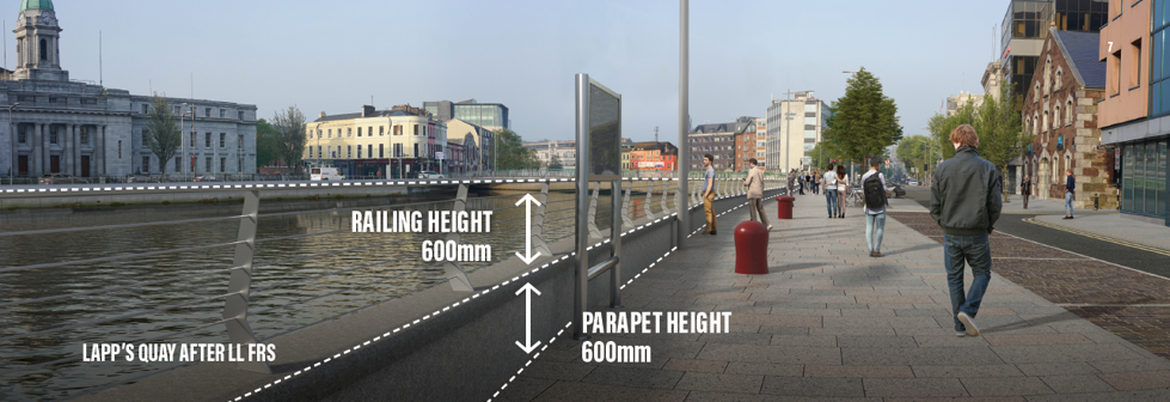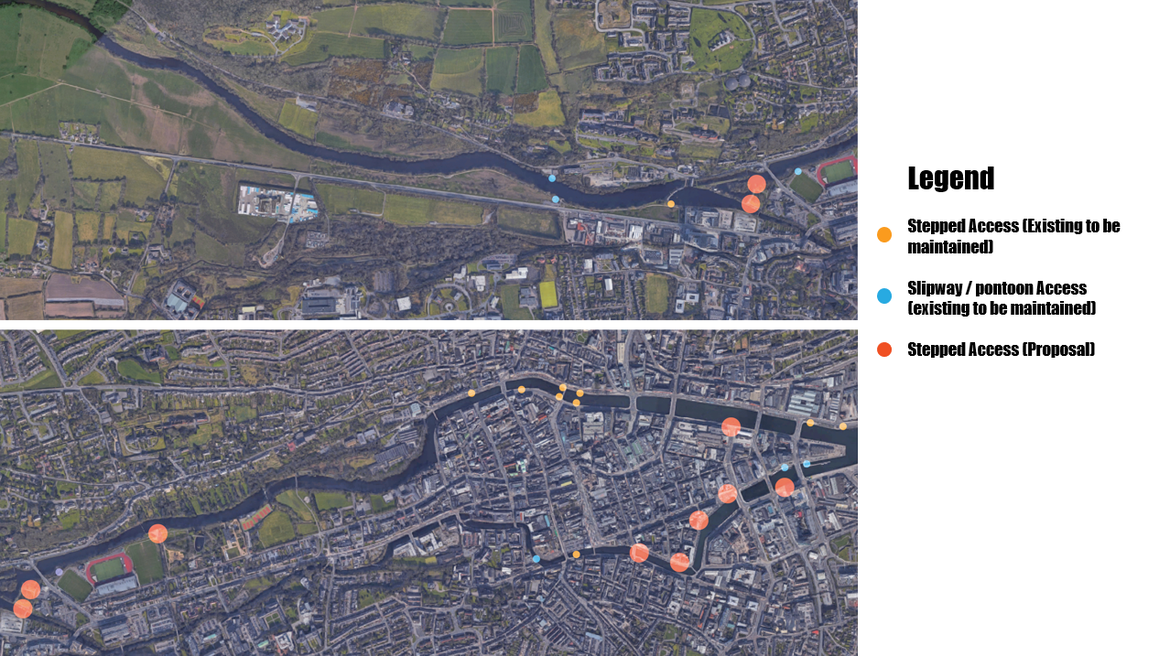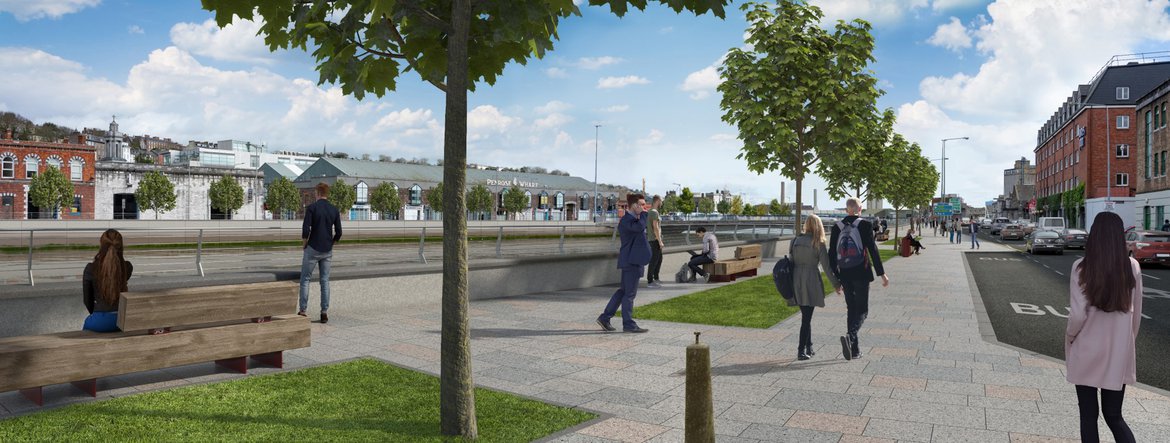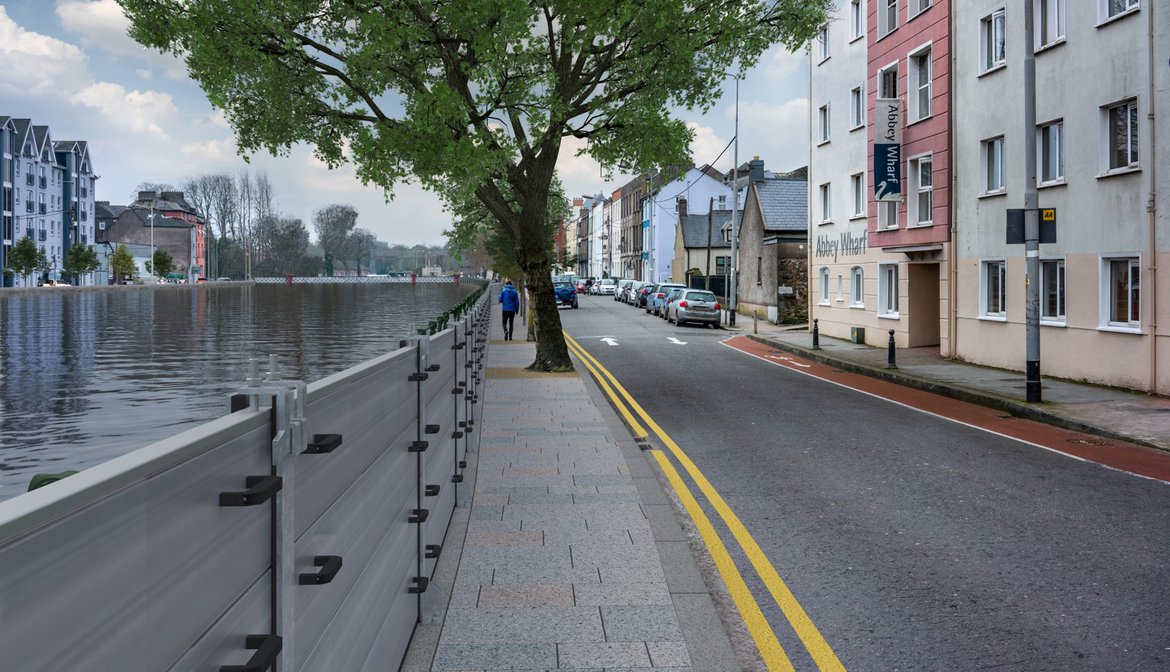Low Level Integrated Defence Elements
Unfortunately, there has been some misleading commentary (particularly on social media) about the scale of defences proposed as part of the Lower Lee Flood Relief Scheme. It has been claimed that it is a “Walls Scheme” with high walls which will block the river from view and inhibit its use. This simply is not true.
As can be seen from the details of the Scheme provided, defences only represent one component of many in what is very much a multifaceted scheme, developed specifically to meet the needs of Cork.
A key driver of the design of the Scheme has been to ensure that defences elements are appropriate to each location and can be integrated seamlessly into the landscape and enhance it, and to put the river back at the heart of the city. Defences take many forms including low level parapets, embankments, seating areas, demountable barriers, glazed elements etc.
Many defence elements in the city centre are no greater than knee height, with the highest city centre defences being just above waist height where they also have to provide fall protection for the safety of pedestrians and cycles using the riverside walkways and cycleways.



